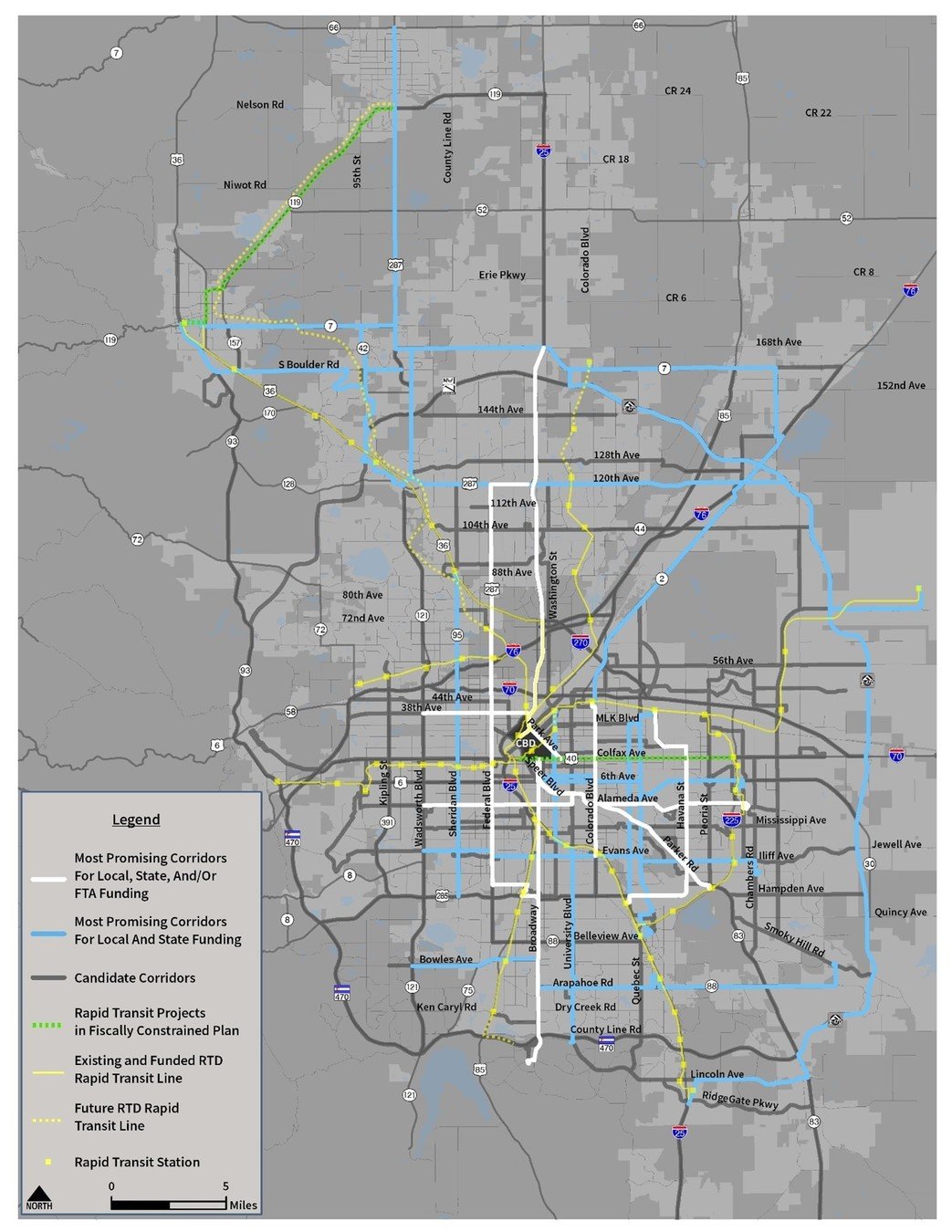RTD'S MOBILITY PLAN FOR THE FUTURE

DRAFT
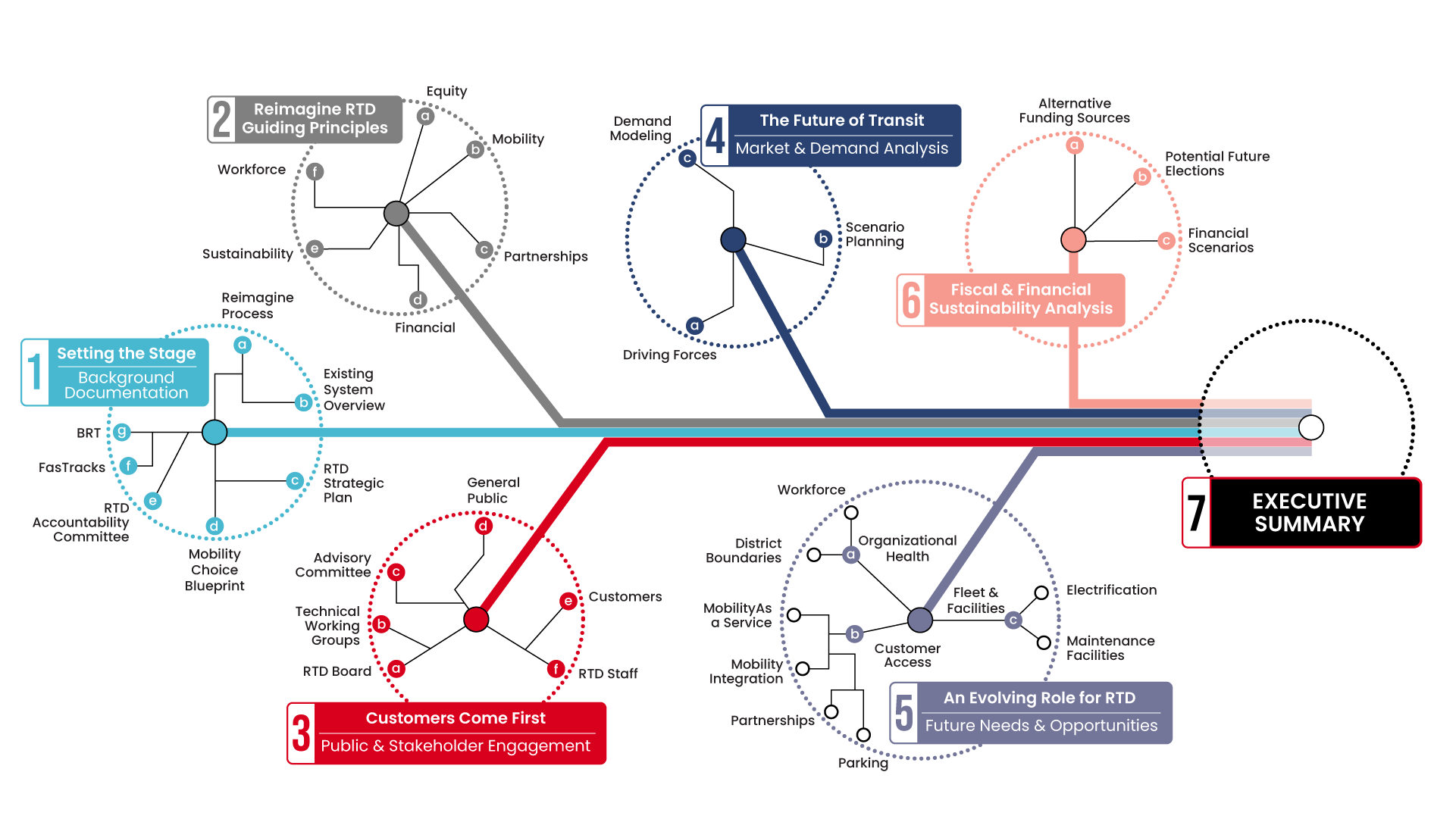
MOVING EVERYONE FORWARD
SETTING THE STAGE
- Mobility Choice Blueprint (2017): A collaborative effort between RTD, DRCOG, CDOT, and the Denver Metro Chamber to envision and plan for the future of mobility in metro Denver
- RTD Strategic Plan (2021): An initiative by RTD leadership to establish quantifiable metrics for tracking the agency’s progress in achieving goals related to four distinct strategic priorities
- RTD Accountability Committee (2020-21): A initiative by Colorado state legislators to develop a set of improvement recommendations for RTD, primarily focused on addressing stagnant ridership and financial challenges which have impacted RTD’s ability to finish construction of the FasTracks program, through an independent Accountability Committee
The Mobility Plan for the Future is a culmination of numerous major planning efforts conducted by RTD and other regional partners over the past several years. Reimagine RTD itself has consisted of much more than what is documented in this report – a comprehensive assessment of RTD’s current services and policies, a nationwide peer review, and development of a 2027 System Optimization Plan all occurred prior to and informed development of this plan. The outcomes of three other major planning efforts independent of the Reimagine process have also been important inputs for this plan:
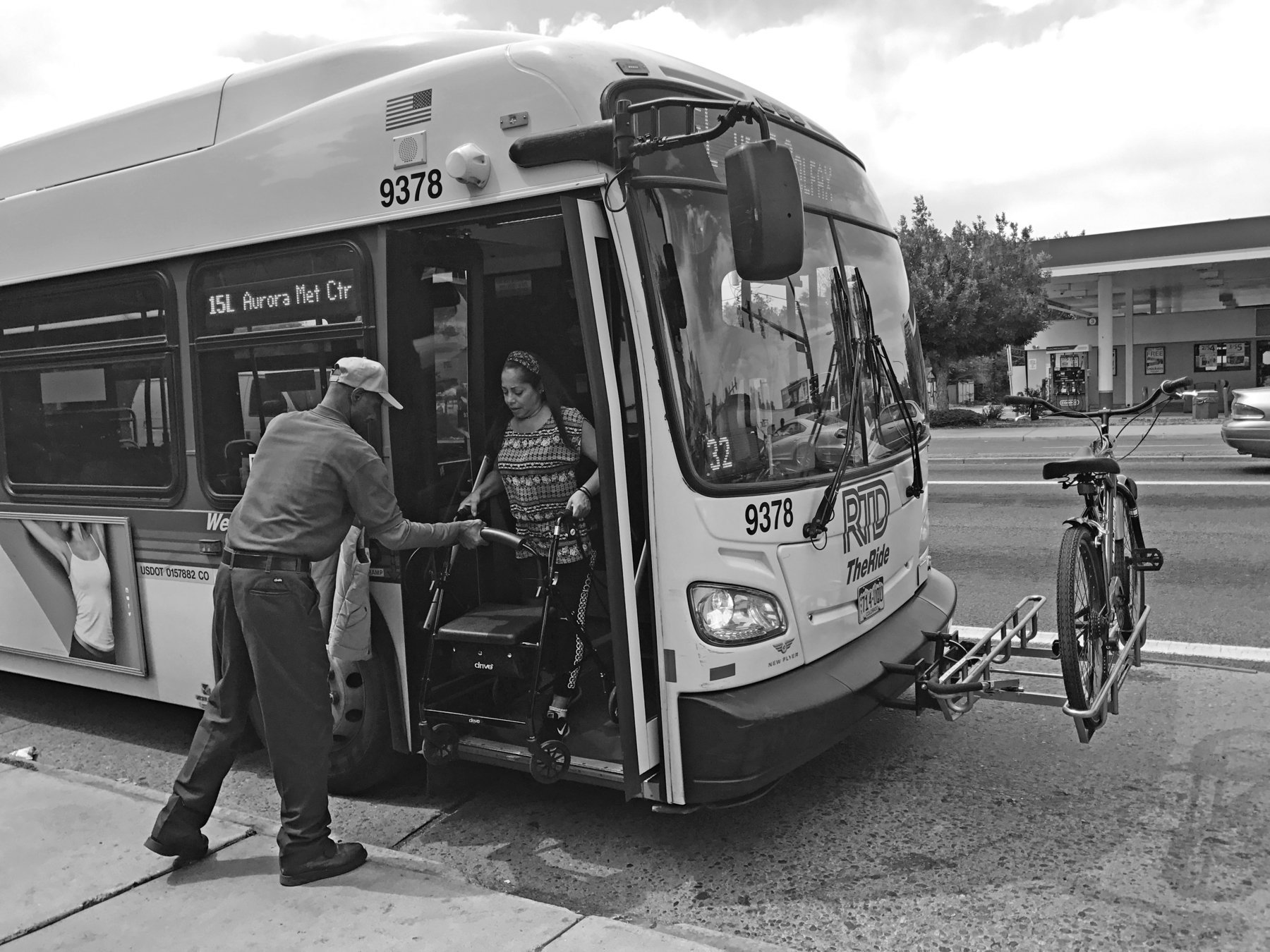
Reimagine RTD’s Mobility Plan for the Future (MPFF) is a comprehensive, forward-thinking plan that identifies strategies to address the future mobility needs of the region. Ongoing industry advancements and societal shifts are substantially altering how and when people travel, how cities function, and how mobility options are factored into broader visions and goals; transit agencies must evolve and adapt to remain a relevant part of the mobility equation. The intent of the MPFF is to help guide long-term decision making
REIMAGINE PROCESS

Reimagine RTD was completed over a three-year period that included a break during the height of the COVID-19 pandemic. The process included a comprehensive review of RTD’s existing services and customer needs and a look to the future to understand how RTD can best support the region’s changing mobility needs as technologies evolve. Stakeholder and customer engagement was key during each step of the process. The process included three primary work efforts.
- System Optimization Plan (SOP) - Restructures and builds on current services to best meet near-term mobility needs within existing workforce and financial constraints
- Financial Analysis - Projects long-term costs and revenues to inform RTD's capacity to meet the mobility needs of a growing region
- Mobility Plan for the Future - Identifies policies and programs to define RTD's role in the region's future mobility landscape and identifies supporting initiatives for implementation
SOP Recommendations
EXISTING SYSTEM OVERVIEW
An important first step in the overall Reimagine RTD planning process was to complete a detailed assessment of existing RTD services and policies – to determine the agency’s best path into the future, we first needed to understand where RTD is now. Elements of this assessment included:

- Review of relevant past planning efforts by RTD and other agencies
- Route-level analysis of fixed-route ridership and operating costs
- Review of non-fixed-route services
- Analysis of regional travel patterns and demographics, including a focus on equity
- Review of RTD’s facilities and fleet
- Review of service policies and standards
- Comparative review of the performance of other transit agencies, including TriMet (Portland), METRO (Houston), DART (Dallas), UTA (Salt Lake City), VTA (San Jose), and MTS (San Diego)
Comprehensive Assessment of Services
RTD STRATEGIC PLAN
Change, Challenge, and Connections, RTD’s five-year strategic plan for 2021 through 2026, outlines a road map of specific initiatives and programs the agency will undertake over the coming years and provides a framework for measuring success. The plan is organized around four strategic priorities – Community Value, Customer Excellence, Employee Ownership, and Financial Success – and their respective discrete, measurable success outcomes; it articulates the organization’s vision for establishing a valuable partnership with the surrounding community, pursuing customer excellence, becoming a regional employer of choice, and achieving financial success. With longerterm outcomes in mind, the plan includes a range of tactics including projects, programs, and general initiatives for short-term implementation as well as performance scorecards for tracking progress. The strategic plan was developed and released during the Reimagine RTD process and helped to inform the organization of Mobility Plan strategy recommendations.

RTD Strategic Plan
MOBILITY CHOICE BLUEPRINT
In 2017, the Mobility Choice Initiative, comprising RTD, DRCOG, CDOT, and the Denver Metro Chamber, was established to work towards a future mobility vision for metro Denver that leverages current assets and new technologies to response to region-wide challenges - congestion, pollution, crashes, etc. - and provide a cohesive system that works for everyone. The work of this group and a technical team culminated in the Mobility Choice Blueprint, a comprehensive 2030 vision document which outlines dozens of discrete Tactical Actions (grouped into seven broader Objectives) collectively aimed at enhancing the accessibility, connectivity, and reliability of metro Denver’s multimodal transportation network by 2030. The Blueprint provides guidance on implementation, alignment, and coordination of the recommendations, as well as an overview of the emerging technologies integrated into the planning process.

Mobility Choice Blueprint
RTD ACCOUNTABILITY COMMITTEE
In July of 2020, the Governor of Colorado and the Transportation Chairs of the General Assembly, in collaboration with the RTD Board, created the RTD Accountability Committee. The Accountability Committee, consisting of elected officials, regional transportation experts, and RTD Board members, was charged with conducting an independent, objective assessment of the agency and providing a set of recommendations for improvement. The primary intent was to address stagnant ridership and financial challenges that have impacted RTD’s ability to finish construction of the FasTracks’ program. The Accountability Committee ultimately developed recommendations under the following nine areas:

- Spend Federal COVID-19 Relief Funds to Rebuild Ridership and Improve Operations
- Improve Operator Retention
- Develop Subregional Service Councils
- Explore Board Structure Modifications Subject to Additional Study and Input
- Explore FasTracks Options
- Improve Reporting Metrics and Transparency
- Improve Fixed-Route and Paratransit Service Provision
- Leverage Partnerships for Resources and Services
- Simplify Fares and Pass Program
RTD Accountability Committee Final Report
FASTRACKS
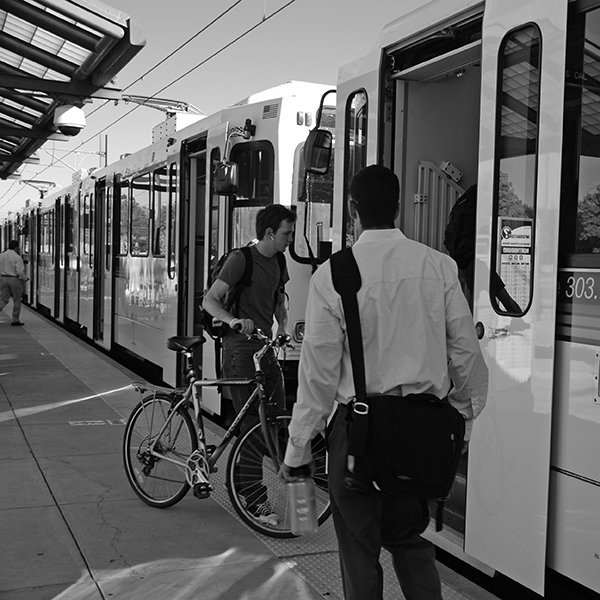
Since receiving voter approval in 2004, the FasTracks program has greatly expanded the District’s rail network – over 75 additional track miles have been built. The Flatiron Flyer rapid transit service and revitalization of Union Station as a regional transit hub are also successful outcomes of the program. But there are several components of the envisioned FasTracks network that have yet to come to fruition:
- B Line: Extension from Westminster to Boulder and Longmont
- D Line: Extension from Littleton to Highlands Ranch
- L Line: Extension from 30th & Downing Station to 38th & Blake Station
- N Line: Extension from 124th Avenue to State Highway 7
All together, these remaining line extensions – all of which have seen their initial construction cost estimates skyrocket in the years since the initiative passed – represent a substantial financial commitment for the agency that has restricted its ability to expand service in other ways, such as additional BRT lines. The future financial implications to RTD of the FasTracks program were a consideration for the fiscal analysis completed as a part of Reimagine RTD. From a future service perspective, these are all still viable rail corridors; recommendations for exploring alternatives are not included the Mobility Plan but may arise from subsequent planning efforts.
BRT
Bus Rapid Transit (BRT) stands out among the array of existing and envisioned transportation options as a practical, equitable, and sustainable solution for enhancing regional mobility. In combining many of the amenities and operational advantages of intensive, capital-heavy transit investment with a footprint that can often fit within existing curb lines, BRT is both an effective and efficient option for enhancing traditional fixed-route bus service – reduced travel times and congestion levels, higher person-carrying capacity of the transportation system, and economic catalyzation can all be realized from BRT investments.
RTD completed a Regional BRT Feasibility Study in 2020 as an initial step in establishing a comprehensive BRT network; it defined arterials throughout the District most appropriate for BRT service based on factors including demographics, current ridership, congestion, and ROW availability, including a subset of recommended routes promising for competitive federal funding pursuits.
BRT Feasibility Study
REIMAGINE RTD GUIDING PRINCIPLES

Early on in the planning process, a set of six guiding principles were defined collaboratively between the project team, RTD Board, and stakeholders to act as a framework for the Mobility Plan for the Future. These principles – Mobility, Equity, Financial, Partnerships, Workforce, and Sustainability – were identified because they collectively define what RTD must focus on to sustain, strengthen, and expand its critical and multi-faceted regional role through the coming decades. They also are meant to align with broader regional and state transportation, environmental, and equity goals. The principles were formally adopted by the RTD Board.
While distinct from one another, each individual principle is connected to the other five; a holistic approach to addressing them is critical. Major agency decisions and actions, even if targeted towards one specific guiding principle, will inevitably touch on all six, making tradeoffs likely and communication – between Board members and staff, between agency departments, between RTD and stakeholders – key. Throughout development of the Mobility Plan for the Future, all technical analyses, public & stakeholder engagement efforts, and assessments of future strategies & actions have all been conducted through the lens of these guiding principles.
EQUITY
Remove barriers to accessing transportation services that enable customers to have the freedom to get where they want to go.

MOBILITY
Provide safe, reliable transportation service to improve the quality of life of residents, customers, and visitors.

PARTNERSHIPS
Pursue partnerships with both public and private organizations that can help identify innovative opportunities to enhance mobility throughout the region.

FINANCIAL
Leverage resources and maximize cost efficiencies, serving as a good steward of taxpayer dollars.

SUSTAINABILITY
Provide sustainable mobility options while continually seeking to reduce RTD’s environmental impact.

WORKFORCE
Foster a dynamic diverse workforce that promotes engagement and innovation, recognizing team members as RTD’s greatest asset.
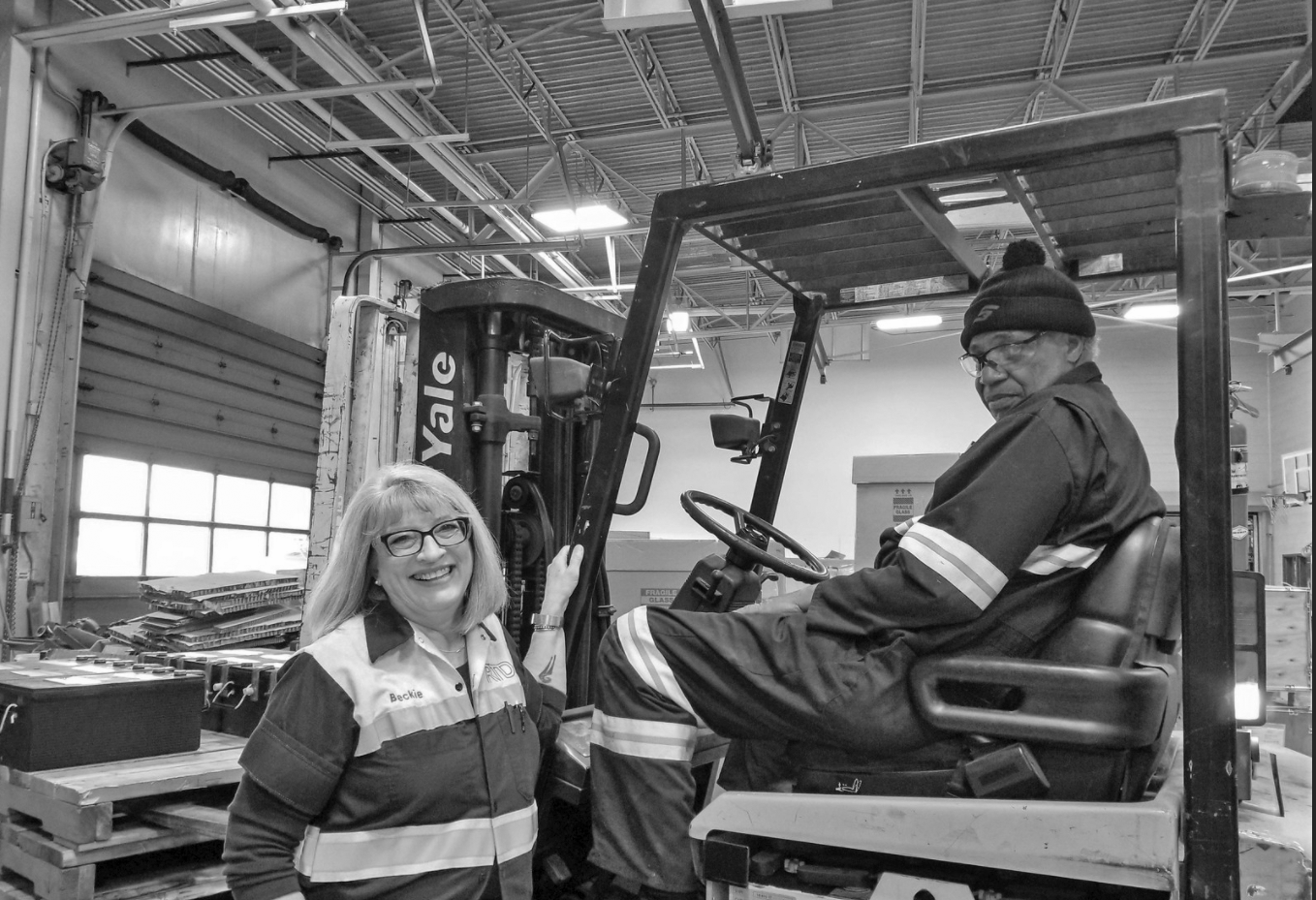
CUSTOMERS COME FIRST | STAKEHOLDER ENGAGEMENT
- Customers: The agency’s top priority
- General Public: Beyond current customers, the general public as a whole was important to engage as RTD seeks to grow ridership and take a more prominent role in the region’s mobility future
- RTD Board of Directors: The decision-making body for RTD; Board members have been regularly briefed throughout the Reimagine process, and their input has been sought to shape the recommendations
- RTD Staff: A staff-level group of RTD leadership has managed the Reimagine process; numerous departments and staff groups, including operators, have been consulted on various technical and elements of the Mobility Plan for the Future
- Technical Working Group: A group of transportation professionals from local partner agencies, community organizations
- Advisory Committee: A group of elected officials and leaders from local jurisdictions, advocacy groups
Stakeholder and community engagement has been a significant element of the Reimagine process. Understanding the perspective of people who use RTD service regularly, people who use it rarely, and the local agencies, organizations, and elected officials that represent and advocate for them is critical to envisioning the future of RTD – every decision the agency makes should be framed around providing better service to its customers. High expectations were established at the onset of the process to have stakeholders and the community provide meaningful input that would shape the Plan; a variety of strategies and tools were deployed to encourage this input through dialogue and discussion about the future of RTD service, and how it reflects the changing needs of the traveling public.

Fundamental to the engagement approach has been understanding RTD’s existing and potential customers and integrating their perspectives into the decision-making process. RTD has conducted a participatory decision-making process that has been open, transparent, and encouraging of participation from a diverse set of perspectives, including, but not limited to, public sector, private sector/business community, non-profits, geographic representation, and protected populations (communities of color, persons with disabilities, and low-income communities).
Outreach Overview
Community Survey Report
RTD BOARD
The RTD Board of Directors has steered Reimagine RTD. As the final decision-making body for the agency, their input and guidance has been instrumental in shaping the process and ensuring outcomes are in alignment with the agency’s priorities. Board members have weighed in through participation in the Advisory Committee, through Board meetings and special study sessions, and through standalone discussions with RTD staff managing the effort.

TECHNICAL WORKING GROUPS
A group of transportation professionals from throughout the District was consulted regularly during Reimagine RTD to provide input on the planning process, review the findings of technical analyses, and inform broader engagement efforts. The group, which generally met on a bi-monthly basis, was primarily made up of transportation planners for cities, counties, and transportation management associations across the region – each participant contributed their respective agency’s perspective to the discussions. Most meetings were interactive in nature: exercises that the group participated in included scenario planning, strategy brainstorming, and live polling.

ADVISORY COMMITTEE
A group of elected officials and other organization leaders from throughout the District participated in Reimagine RTD in an advisory capacity, providing insight on local priorities and concerns and helping review various analyses and deliverables. The group, which generally met on a bi-monthly basis, consisted of city councilpersons, county commissioners, mayors, RTD Board members, advocacy leaders, and community organization executives. Most meetings were interactive in nature: exercises that the group participated in included scenario planning, strategy brainstorming, and live polling.

GENERAL PUBLIC
Not everybody in the region is a regular transit user – many people never use it at all. RTD’s ability to attract more people to uses buses and trains for some of their trips is imperative to achieving the region’s overall mobility goals related to equity, sustainability, and safety. With that in mind, Reimagine RTD has sought to engage as many community members as possible – through interactive digital tools, through a statistically valid survey, through meetings with community groups, and other avenues – to understand current attitudes towards transit and identify what the agency needs to do to make itself a more attractive mobility option to more people.

CUSTOMERS
Customers are RTD’s top priority – serving people is the entire reason the agency exists. Through focus groups, surveys, and a variety of other methods, Reimagine RTD has been focused on why riders use transit and how it can serve them better.

RTD STAFF
Reimagine RTD has been managed throughout by the agency’s planning group; through collaboration with the RTD Board and agency leadership, they have given direction on what needs to be studied, how needs to be engaged, and how the input and findings should inform recommendations for the future. Many other staff groups at RTD, including operations, service development, public relations, and safety/security, have been involved during the process as well; their technical expertise and agency knowledge has been instrumental in interpreting analysis results and ensuring recommended strategies are practical and implementable.

THE FUTURE OF TRANSIT | MARKET & DEMAND ANALYSIS
The Mobility Plan for the Future is a decidedly forward-thinking document. Ongoing industry advancements and societal shifts are substantially altering how and when people travel, how cities function, and how mobility options are factored into broader visions and goals; transit agencies must evolve and adapt to remain a relevant part of the mobility equation.

Reimagine RTD has sought to imagine the future of regional mobility – and RTD’s place in it – through a variety of methods. A series of driving forces anticipated to substantially influence travel behavior in the future were identified, as well as their respective levels of predictability and influence. The most prominent driving forces – identified in collaboration with stakeholders as funding levels, workforce availability, and level of telecommunicating – helped inform a scenario planning exercise aimed at identifying appropriate strategies for RTD to pursue given various possible futures. And robust travel demand modeling was conducted as a technical, data-driven supplement to these more high-level exercises.
DRIVING FORCES
To better understand the future transit market, Reimagine RTD considered driving forces or trends expected to have a substantial influence on travel demand or travel patterns. While some driving forces such as shifting demographics are predictable, others such as the economy, customer trends, technology, and politics have a high level of uncertainty. The balance between uncertainty and impact was a key factor in determining which driving forces to consider more closely in scenario planning exercises. Driving forces discussed and considered by the TWG (Technical Working Group), AC (Advisory Committee), and CAC (Community Advisory Committee) included:

- Air quality/greenhouse gas emissions
- Cyclical economic patterns/funding
- Workforce availability
- Increasing population diversity
- Increasing number of older adults
- Ongoing public health and safety concerns
- Advances in technology e.g., autonomous fleets
- Growth in transportation competition/rideshare services
- Increases in ecommerce
- Work from home/telecommute
- Increases in cost of living
- Changes to land use patterns
- Changing fuel costs/vehicle ownership costs
- Increasing demand for vehicle electrification and the capacity of the power grid
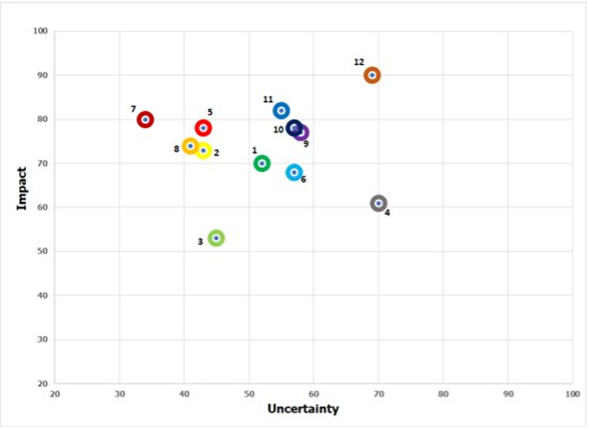
1 – On-demand Mobility Services
2 – Universal Apps
3 – Electrification
4 – Disruptive Technologies
5 – Parking Costs
6 – Competition
7 – Population Changes
8 – Telework Trends
9 – Workforce Availability
10 – Local Gov Support
11 – State & Federal Policy
12 – Funding
This chart depicts the level of uncertainty and level of impact on travel patterns of 12 identified driving forces. For example, future funding levels (12) are highly uncertain and likely to have a substantial impact on future travel behavior, while electrification (3) is well-understood and not likely to substantially influence travel behavior.
SCENARIO PLANNING
Scenario planning is a process of learning by imagining different futures; it helps participants uncover blind spots by putting aside deeply ingrained assumptions. It consists of developing plausible scenarios for discussion that include an organization’s critical uncertainties. The idea being, if an organization is aware of what could happen in the future – as opposed to what it thinks will happen - it will be better prepared to respond to it.

The intent is not to choose a single future scenario but rather to consider a variety of futures that result in better, more resilient decision making for the organization.
• Act as a regional mobility integrator to seamlessly coordinate transportation providers and modes
• Provide a high-capacity, regional backbone of service
• Partner with local agencies
• Increase/diversity funding sources
Strategies that were identified as productive in some scenarios but counterproductive in other scenarios included:
• Providing low-capacity, short range, local service
• Early adoption of zero-emission fleet
• Completion of the unfinished FasTracks system
• Shrinking or expanding the District boundary
Moving forward with these strategies will require additional analysis and monitoring of the market to ensure that RTD has sufficient funding and travel demand to make them a positive investment.
A scenario planning process was conducted with the TWG (Technical Working Group), AC (Advisory Committee), and CAC (Community Advisory Committee) to identify strategies which will ensure RTD remains a responsive and resilient organization in an uncertain future. Scenarios focused on three key driving forces: level of funding, workforce availability, and level of telecommuting. Results were used to help inform strategy development and prioritization; strategies identified by the group as productive regardless of the future scenario – and thus worthy of consideration for early adoption – included:
DEMAND MODELING
Even before the COVID-19 pandemic, Reimagine RTD was being conducted in a period of massive uncertainty and rapid transformations related to transportation services, demand, technology, and operations. The pace of technological innovation and adaptation continues to increase. On top of this rapid change, COVID dramatically changed our everyday needs and behaviors, and the long-term impacts of these changes are still unknown. Even more unknown are the unanticipated risks and disruptors that will continue to reshape the District’s future and transportation needs.
- Workforce – changes the frequency assumptions of all routes in the region to account for workforce (and/or financial) issues that may restrict or enable RTD to provide service.
- Transit Network – changes the layout of the transit network to account for different levels of funding available to either limit what kinds of service can be provided or to be able to build out infrastructure for new services. There are four levels of transit networks assumed, ranging from the bare minimum of service provided by RTD during the pandemic’s peak to full build-out of the 2050 DRCOG Regional Transportation Plan (financially constrained) plus the remainder of FasTracks, planned BRT corridors, and Front Range Passenger Rail.
- Telework – varies the shares of workers working from home.
- Auto Ownership – varies the likelihood of being an auto sufficient (number of vehicles in the household is greater than or equal to the number of workers) household.
- Auto Operating Costs – varies the average per mile total cost assumed for operating and maintaining a vehicle.
- Park and Ride Costs – varies the cost incurred to transit riders when parking at a transit PNR (Park-n-Ride).
- Destination Parking Costs – varies the cost incurred to people driving to a destination (such as Downtown Denver) and parking there.
-
Micromobility – increases availability of micromobility to denser areas of Denver in the future,
assuming higher walk speeds as a proxy.
RTD used FHWA’s (Federal Highways Administration) Exploratory Modeling and Analysis for Transportation (EMAT) tool, along with the DRCOG (Denver Regional Council of Governments) activity-based travel demand model, to plan for a range of plausible alternative futures and address a broad set of driving forces to help understand the uncertainties and their influence on transit ridership.
The EMAT variables, determined in coordination with RTD, included:
A series of performance measures were identified to frame the impact adjustment of the EMAT variables has on expected future transit ridership, as well as impacts to other modes and on the transportation system. Key metrics include:
- Transit ridership by service class and access mode;
- Mode shares by work and non-work travel;
- Vehicle-miles and vehicle-hours traveled and vehicle hours of delay;
- Person-miles and person-hours traveled
by mode; - Average auto and transit travel times; and
- Average trip lengths.
EMAT Modeling Tech Memo
EMAT Modeling Tech Memo
Greenhouse Gas Modeling
AN EVOLVING ROLE FOR RTD | FUTURE NEEDS & OPPORTUNITIES

Throughout its 50-year history, the focus of RTD has largely centered on its fixed-route services – buses and trains. And appropriately so, as these are the tenants of any major transit system. But as society, technology, and the mobility industry evolve, so must RTD’s role. From micromobility to electric buses to integrated mobility apps, there are myriad new technologies, modes, and platforms for the agency to grapple with as it seeks to sustain its standing in the regional mobility landscape. Reimagine RTD has dived deep into these topics and developed an array of strategies that will better position the agency to take advantage of them for the benefit of its customers and the region.
ORGANIZATIONAL HEALTH

In order to serve its customers and the region well, RTD must be a strong organization. Financial solvency and employee satisfaction are perhaps the two defining characteristics of a healthy transit agency, and both are things RTD has struggled with in recent years. Debt obligations, rising operation and capital costs, and staffing shortages – all combined with declining ridership – have hurt the agency’s reputation and bottom line. In addition to a detailed financial analysis, Reimagine RTD has delved into and devised strategies for two key topics related to the agency’s health: workforce challenges and the District’s boundaries.
CUSTOMER ACCESS
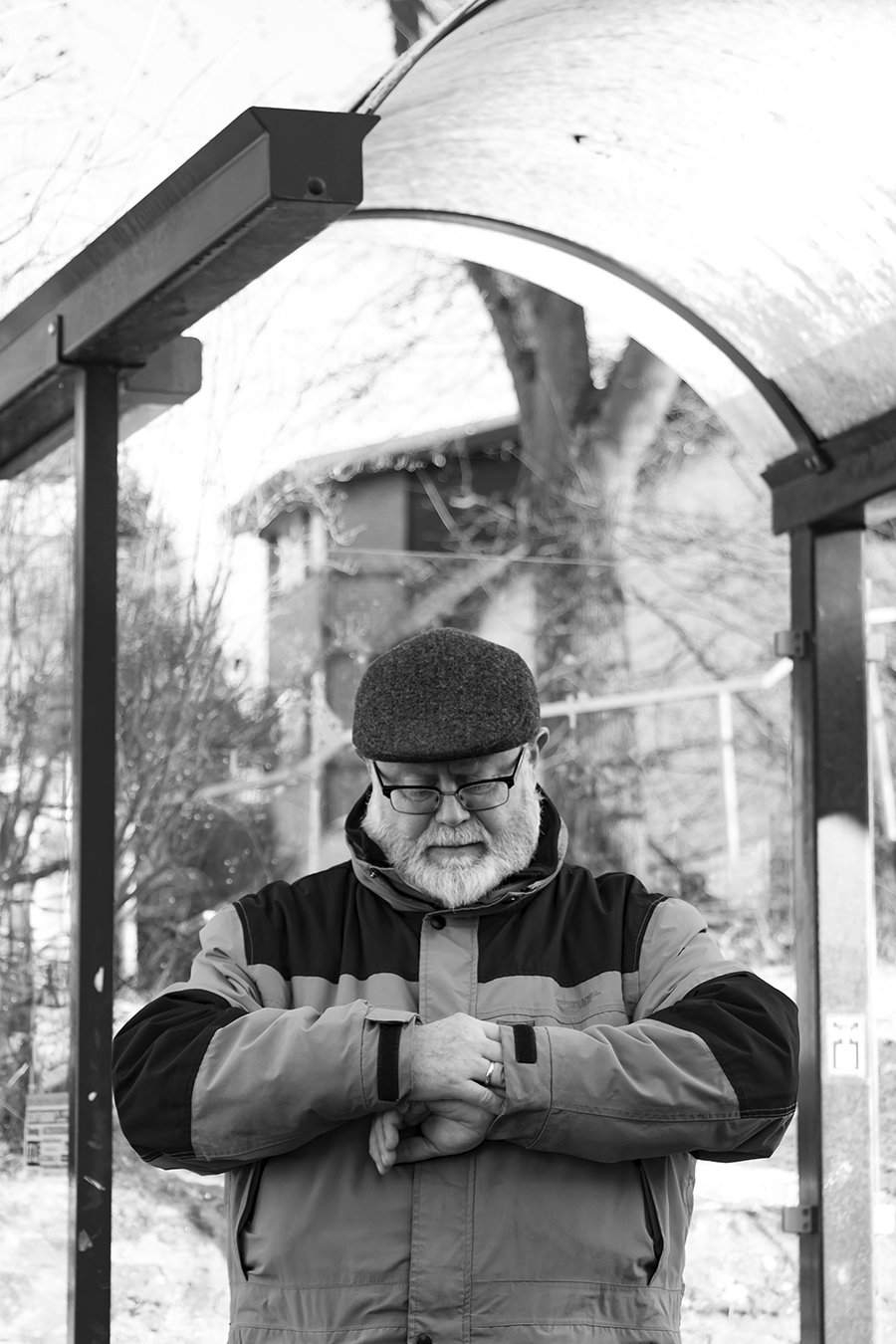
RTD is first and foremost an organization that provides access – to employment, to entertainment, to recreation. The agency serves a critical role in connecting people throughout the region with the places they need to and want to go. But there are considerable gaps; the existing transit network alone does not present a practical mobility option for many, for reasons including frequency, coverage, and service span. And from a customer service perspective, nearly as important as the quality of access that RTD provides through its services is the quality of access to its services. If getting to or from the bus is uncomfortable or inconvenient, a lot of people likely won’t even make the effort.
A thorough assessment of access – both that which RTD provides, and that to its services – was a major component of Reimagine RTD because it is such a complex issue, and one of the most important for the agency to address if it hopes to substantially grow its customer base. Current plans for fixedroute service expansions, such as completion of the FasTracks network and implementation of a comprehensive BRT system, will go a long way towards enhancing access, but there are many other access-related strategies – from other service types to policy changes to technology adoption – the agency can pursue in coordination with regional partners to supplement its core transit network. Key questions explored in this effort included:
- How can RTD best incorporate Mobility as a Service and Mobility on Demand innovations?
- How can RTD better integrate with other mobility options and providers in the region?
- How can RTD revamp its parking program to better align with agency and regional goals?
FLEET & FACILITIES

As our society transitions away from the use of fossil fuels for transportation, battery electric buses (BEBs) allow a transit authority to make its mark on climate goals for future generations. As of 2020, the technology, despite being established in the industry, is still in its nascency. Understanding current capabilities, configurations, and future trends will prepare RTD to make informed decisions when considering opportunities for zero-emission bus (ZEB) adoption – via either BEBs or some other technology. As a part of Reimagine RTD process, an assessment of the viability of expanding the agency’s zero-emission fleet – both in terms of the actual fleet and of the facilities needed to support it – over the next 30 years was conducted.
Battery Electric Bus & Bus/Rail Maintenance Facilities Summary Report
MOBILITY AS A SERVICE

The concept of Mobility as a Service (MaaS) - that a modern transportation system must extend beyond just streets, sidewalks, and other physical infrastructure to incorporate digital platforms which assist with access and modal integration – has had a substantial impact on transit systems throughout the world in recent years. A proliferation of apps for ticketing, trip planning, and other uses has dramatically altered the customer experience; in many cases making it more seamless and convenient. When implemented thoughtfully in partnership with local agencies and other mobility providers, these platforms can advance customers’ perceptions of the reliability of, and access to, transit service – and potentially increase the use of transit service. At a higher level, MaaS is a strategy by which to bundle service options and support broader policy objectives such as sustainability and equity access.
Through its internal MaaS Committee, RTD has been able to advance numerous MaaS-related initiatives in recent years, including advanced trip planning options and partnerships with ridehailing services. Reimagine RTD assessed current trends and research related to MaaS in order to identify other ways in which the agency can incorporate digital platforms to the benefit of its customers.
RTD Reimagine MaaS Tech Memo
MOBILITY INTEGRATION
In a comprehensive transportation system, fixed-route transit is but one piece of the mobility puzzle – a substantial one, certainly, but one that still must be integrated with others to be cohesive, efficient, and attractive. As the most prominent regional transportation provider in the District, RTD is the natural choice to act as a vanguard of a more integrated mobility system; one where its core fixed-route services are complemented by an array of Mobility on Demand (MOD) and First/Last Mile (FLM) services offered by the agency itself and other partners.
MOD is a term that refers to an individual’s ability to access various mobility options when and where they want to, often through a mobile app or other technology means. Common examples include bike-sharing and demandresponsive microtransit. FLM is an umbrella term for all the ways in which someone may move between their origin and a bus or a train (the “first mile”) and then from the bus or the train to their destination (the “last mile”). Sidewalks, bike lanes, circulating shuttles, and micromobility devices all help cover first and last miles. RTD already integrates with, and in some cases operates, an array of MOD and FLM services, but as the agency looks to the future of mobility, where transportation technology, efficiency, and sustainability, will only grow in importance, funding opportunities to strengthen the link between its core fixed-route services and other modes will be key. As a part of Reimagine RTD, the agency’s recommendations from First and Last Mile Strategic Plan – completed in 2019 – were reviewed and considered more holistically in the context of the overall mobility plan; and additional strategies for greater mobility integration were devised in partnership with local agencies.
RTD will work with local communities, human-service agencies, and private operators to expand and better coordinate the ‘menu’ of mobility services available for District residents and visitors. The buses and trains that comprise RTD’s core service are but one element of the overall regional multimodal network; integrating them with Mobility-on-Demand (MOD) and First/Last Mile (FLM) services is essential to a cohesive, efficient, and attractive transit system. As the largest mobility provider in the region, RTD is a natural fit to act as the vanguard of an expanded and enhanced mobility system.
MOD Examples
- FlexRide
- Bike-share
- Microtransit
FLM Examples
- Formalize MOD/FLM coordination
- Define partnership opportunities
- Implement FLM Strategic Plan
- Develop integrated mobility platform
- Bike/ped infrastructure
- Circulating shuttles
- Micromobility
RTD Strategies
RTD MOD & FLM Tech Memo
ELECTRIFICATION
Currently, RTD operates a fleet of 36 BEBs (Battery Electric Bus) in addition to its conventionally fueled vehicles. A typical 40-foot BEB has a range of approximately 150 miles, though this can vary based on specific route (and/or block) characteristics and other consumption factors; this is not practical for some of RTD’s longer routes and blocks. The variation in performance makes it essential that the planning stages of BEB implementation include performance modeling of BEBs for specific service patterns. When a service block – the work assignment for a single vehicle during a workday, which may consist of multiple trips on a route, as well as multiple routes – cannot be completed with a single BEB, agencies can consider a variety of strategies, such as making service adjustments (e.g., reducing frequencies or route lengths), purchasing additional vehicles, incorporating opportunity charging (charging at stops while the bus is in service), procuring fuel cell electric buses (which have ranges that exceed battery electric buses), or delaying BEB integration until technological advances (such as improvements in battery energy density) meet range requirements.
To assess the viability of operating BEBs, RTD’s current service was modeled using a proprietary, formula-based tool called Lightning Bolt. The tool determines the percentage of service that can be completed based on provided scheduling information, regional characteristics (elevations and climate), and various BEBrelated vehicle and charging assumptions (battery capacities, charger types, etc.). Using these inputs, analyses were conducted to determine the percent of service that can be completed under two scenarios: typical and conservative. The outputs were then produced on a block-level scale, which provided a clearer picture of the feasibility of electrifying an agency’s vehicle fleet by divisions. If the modeled BEB “fails” to complete the block, the output would capture the degree of failure and the factors that contributed to that performance insufficiency.
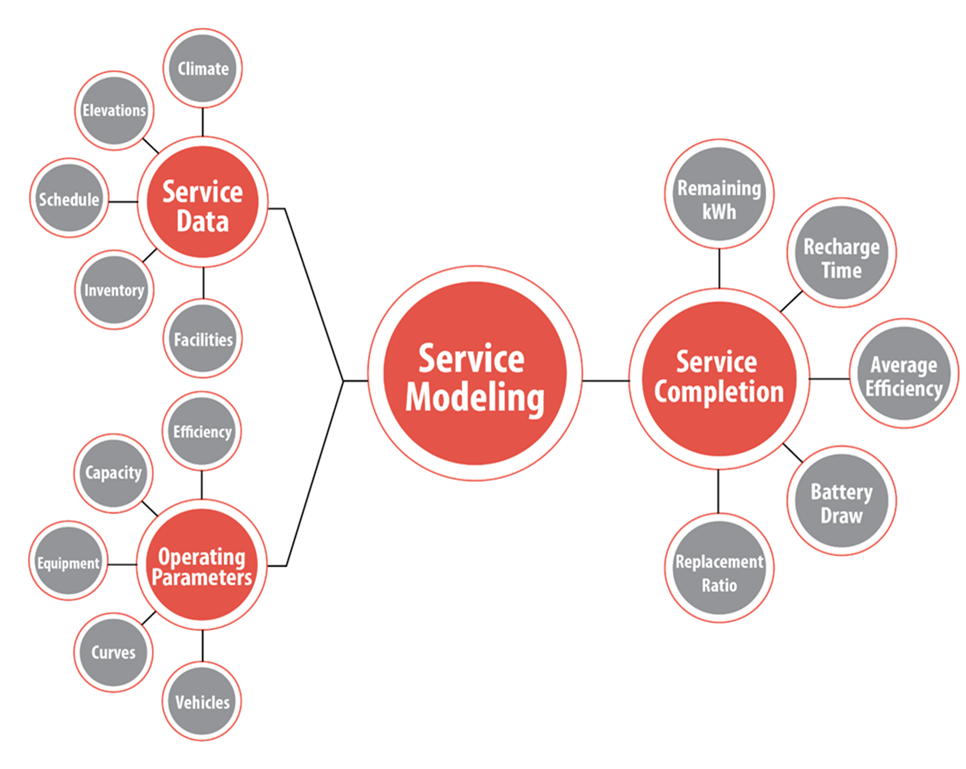
Zero Emission Vehicle Plan
PARKING

Parking, while not as front-of-mind as the buses and trains, is an important piece of the transit equation. RTD can’t stop in front of every house in the District; many people find it most convenient to access the agency’s services by first driving to a station, and they need somewhere to park. The parking system, as it operates today, generally functions well. However, the existing policy of incorporating the costs to provide daily parking in transit fares and assessing parking fees only for overnight parkers effectively subsidizes daytime parking for those individuals at the expense of those who do not use parking, particularly low-income transit riders and those who park overnight. The provision of “free” parking by including its cost in the transit fare also does not align well with agency and regional sustainability goals for reducing the environmental impacts of transportation. There are also RTD-owned parking facilities which are substantially underutilized; repurposing those – either in part or entirely – to other uses could be beneficial to RTD, local jurisdictions, and the region as a whole. For these reasons, an assessment of RTD’s parking program and resources was conducted in tandem with more service-focused assessments to identify opportunities for optimization.
Parking Tech Memo
PARTNERSHIPS

Local agencies are critical partners to RTD in providing high-quality transit service throughout the District. RTD’s greatest strength is providing a regional transit backbone that crosses jurisdictional boundaries, while local agencies know best the specific needs of their community members. To help focus RTD’s limited resources on regional services and increase local agency control over community-based services, and better coordinate the two, a key recommendation of Reimagine RTD is to establish a formal Partnership Program. This program would provide technical assistance, operational support, and financial support – in the form of matching funds – to local agencies for implementing local transit improvements. RTD will continue to act as the integrator of transit services in the region.
The Partnership Program would center around an annual call for project applications to local partners, with each application evaluated by RTD based on factors such as alignment with the agency’s guiding principles, operational characteristics, cost/benefit, and feasibility. RTD staff would then recommend select projects for implementation each year. Implemented projects would be evaluated on an ongoing basis against a series of performance metrics to ensure they are meeting expectations. RTD would dedicate 1 to 2% of its annual operating budget for the matching funds.
RTD Partnership Program Recommendations
Program Benefits:
- Allows RTD to advance partnerships in a way that is clear and straightforward
- Improves partnership transparency, standardization, and efficacy
- Defines annual budget dedicated to partnership
- Prioritizes equity populations
- Provides clarity to potential partners on criteria and evaluation while maintaining flexibility
DISTRICT BOUNDARIES
The Regional Transportation District – at 2,342 square miles – is the largest area served by a single primary transit agency in the country. There are pros and cons to this distinction: the large size means there are a lot of potential riders who can access a wide variety of destinations with one fare, but providing quality service throughout such a large area is a substantial challenge. RTD has the added geographic challenge of not currently serving every part of its partner metropolitan planning agency, DRCOG (Denver Regional Council of Governments) – portions of Gilpin, Clear Creek, Douglas, Weld, Adams, and Arapahoe Counties are within the DRCOG boundary but outside RTD’s service area. This has led to confusion in the past about why RTD services do not extend to certain communities and neighborhoods in the metro area.
With these challenges and considerations in mind, a district boundaries analysis was conducted as part of the Reimagine process to help RTD understand the financial implications of either expanding or contracting the current service area boundary. Should boundary adjustments in any part of the District rise to becoming strongly considered, more detailed analyses and discussions with impacted jurisdictions and other stakeholders will be necessary. The analysis was framed around two representative case studies – one focused on boundary expansion, and one focused on boundary contraction:
- East Aurora Case Study – Studied the portion of incorporated Aurora currently outside the RTD boundary to understand the impact of expanding the District boundary.
- Parker Case Study – Considered de-annexing the Town of Parker from the District to assess the impact of contracting the District boundary.
From a financial standpoint, these case studies demonstrated that strategic expansion of the District boundary could be beneficial for RTD, while contractions would likely not be—projected future sales tax revenues for the agency exceed projected future operating costs in Parker and east Aurora by a considerable margin. However, any decisions about future boundary changes will depend on much more than a financial analysis. Annexing in or out of the District is foremost a political decision for the local agencies; land-use dynamics are another critical factor to consider. While these are largely outside RTD’s direct control, the agency can take steps to better position itself for making informed decisions about boundary adjustments. Understanding that boundary expansions would generally beneficial to RTD, while boundary contractions would be detrimental, future considerations for RTD to consider include:
- Review minimum density threshold for service and assess if adjustments for new development are warranted
- Work with local jurisdictions to ensure that areas on the fringe of the District develop in a way that makes them feasible to serve
- Proactively reach out to jurisdictions who have expressed concerns about local service levels to acknowledge those concerns and signify an interest in collaboratively identifying opportunities for improvement
District Boundary Tech Memo
WORKFORCE

RTD’s ability to deliver service relies on a steady, engaged workforce with the appropriate skills. This has been a challenge for years: dating to pre-pandemic times, the agency and its peers across the country have been struggling to hire and retain key employees including operators and maintenance staff, which in turn limits their ability to serve their communities. Past research has identified factors such as competition for skilled personnel, testing requirements, technological disruptions, an aging workforce, the image and culture of transit, and a variety of policy decisions by governing boards as contributing to ongoing transit workforce challenges.
This is a systemic problem, not an agency-specific one – there are no simple solutions for driving change. Nonetheless, Reimagine RTD provides an opportunity to rethink what it means to be an RTD employee, and ensure the agency’s greatest asset – its people – is valued and supported. As part of the planning process, current workforce challenges and trends were assessed; and strategies to support RTD in the development of a more stable, empowered, and engaged workforce moving forward were developed.
Workforce Tech Memo
MAINTENANCE FACILITIES

In considering the viability of a complete fleet transition to BEBs (Battery Electric Bus), the facilities are nearly as important to assess as the vehicles themselves – all those buses need somewhere to stay overnight, charge, and be maintained. As a starting point for analyzing the facilities, site visits and investigations were conducted at all seven divisions. Each facility was examined for existing conditions and traffic/work flows at the site to uncover any major issues that would either benefit or impede a near-term, small fleet BEB implementation plan. Any noted impediments were further investigated, and strategies were developed and presented to either mitigate or overcome them. Based on the findings, required infrastructure and facility modifications were then identified accordingly. For initial near-term BEB fleet deployment, viability of each facility to serve BEBs was assessed based on a series of assumptions related to fleet size, charging types, and charger-vehicle ratios. The findings of these assessments were then extrapolated for long-term deployment. The key factors considered for this analysis include:
- Routes served by each facility
- Bus storage and parking spaces within each facility
- Total electrical requirement for BEBs at each facility
- Capability and physical space needed for each site to house the infrastructure necessary to charge the BEBs, and other major facility improvements necessary to accommodate the infrastructure
Maintenance Facility Plan
FISCAL & FINANCIAL SUSTAINABILITY ANALYSIS

Reimagine RTD conducted an extensive review of RTD’s current financial planning processes and developed a new long-range financial model for RTD. The model projects revenues and expenses through 2050.
- Operations, asset maintenance and replacement, and new capital investment costs
- Allocation of project costs by year
- Annual costs by major category
- Revenues from all currently available sources
- Revenues from one-time or unique sources
- Size of the funding gap
The financial model estimates
- RTD was operating more service than was financially sustainable in 2019
- Long-term projections indicate limited to no capacity to:
Preliminary Fiscal and Financial Analysis Findings
- Grow bus or rail services
- Make substantial capital investments
- Complete any portion of FasTracks in the next 20 years
ALTERNATIVE FUNDING SOURCES

Reimagine RTD evaluated over 30 funding and financing strategies that could potentially be used to generate additional funding for unfunded projects. These include:
- FEDERAL & STATE FUNDING Grant funding through Federal and/or State governments. These may be project-specific grants directly from a program, or pass-through funds through a state allocation of federal funding. This funding tends to be project-specific, and can most often only be used for capital costs.
- ONGOING REVENUE GENERATION Tools predominantly including taxes and fees that can be implemented to generate revenue on an ongoing (annual) basis. This funding can have broader applications than grant funding, and can often be used for both capital and operating costs.
- SPECIAL DISTRICT Tools including area-specific benefit districts (taxing and assessment), some of which are currently authorized in Colorado; as well as other transit-specific districts that would require legislative action to be implemented.
- FINANCING TOOLS Various financing mechanisms that can be used to leverage existing funding for specified applications.
Funding Matrix
Funding Memo
POTENTIAL FUTURE ELECTIONS
The Taxpayer’s Bill of Rights (TABOR) is an amendment to the Colorado Constitution, passed in 1992. Best known for requiring voter approval for new taxes, tax increases, and debt issuances, it also limits the revenue that governments and tax-collecting agencies in the state can retain and spend (requiring excess revenues to be refunded to taxpayers). As a taxing jurisdiction, RTD is subject to TABOR limits on the amount of revenue it can collect in each fiscal year. However, the agency’s two outstanding voter approvals for revenue collections, tax, and debt issuances are both currently exempt from revenue limits. The current TABOR exemption associated with T-Rex, for RTD’s base sales and use tax levy of 0.6%, expires in 2024. With this expiration, RTD will be subject to future revenue limits on the 0.6% sales and use tax collection. Voters in taxing jurisdictions can elect to opt out of TABOR’s revenue limits, an act that has become known as “De-Bruceing.” This does not raise taxes, but rather allows the jurisdiction to retain all tax revenue collected. The Reimagine RTD longterm financial analysis reviewed the impact of TABOR on RTD’s financial health and recommends that RTD seek voter approval for continuing to exempt revenues from TABOR limits by 2024.

This effort included an analysis of five potential revenue tools to meet future funding needs. Of the tools considered, an additional sales and use tax has the greatest revenue potential, followed by a property tax within the District. Both of these tools, if implemented, would require approval of voters within the District boundaries.
FINANCIAL SCENARIOS
Additional funding beyond what RTD currently receives through system revenue and taxes is necessary to implement many of the capital and service improvements which the agency and region aspire towards. To identify the magnitude of that funding gap and inform RTD’s long-range financial strategy, an analysis of RTD’s reasonably anticipated sources and uses of funds through 2050 was conducted. Three financial scenarios were examined:
- RTD Fiscally Constrained Scenario: The most constrained scenario, assumes TABOR restrictions remain in place
- DRCOG Fiscally Constrained Scenario: The moderately constrained scenario, assumes TABOR restrictions remain in place
- Aspirational Scenario: The least constrained scenario, assumes TABOS restrictions are removed
With current funding levels, RTD will have a $2.5 billion shortfall by 2050 just from operating the full SOP network unless TABOR restrictions are lifted. Anticipated shortfalls for the other two scenarios, which include substantial service expansion and major capital investments, are much larger, highlighting the need for considerable additional revenue if RTD is to improve system capacity and frequency.
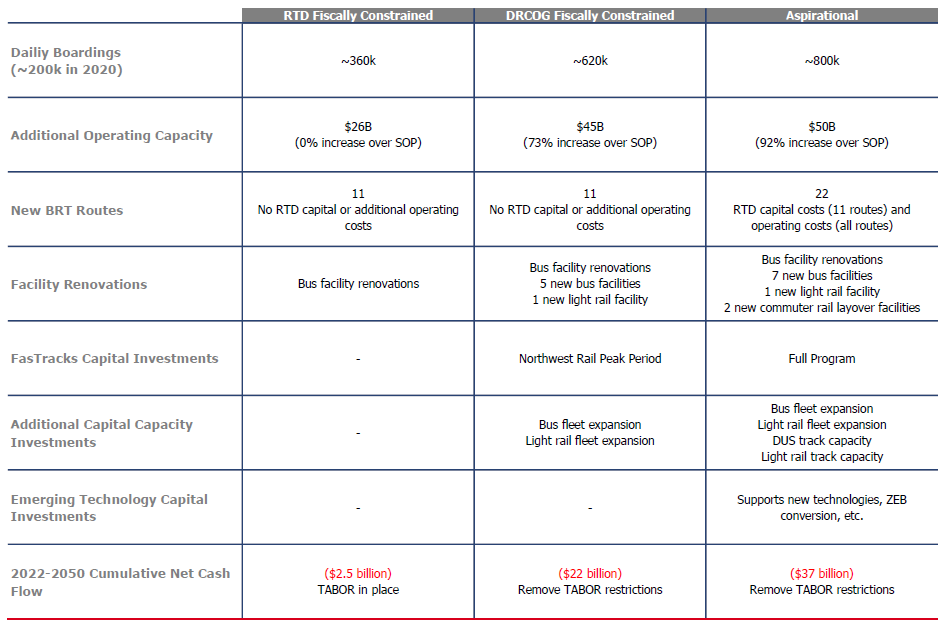
MOBILITY PLAN FOR THE FUTURE
Through the technical analyses and stakeholder, staff, and Board input conducted for the Mobility Plan for the Future, a set of four aspirational statements were crafted to reimagine and illustrate RTD’s role in the community’s mobility. The statements address access, equity, sustainability, and financial responsibility. Each statement is supported by a set of opportunities to guide RTD decision making. Some opportunities can be implemented with RTD’s current funding sources, but many of the more robust recommendations can only be achieved with additional funding for the agency. The Executive Summary provides an overview of the aspirational statements and associated opportunities recommended to position RTD to meet the region’s future mobility needs.
Moving Everyone Forward Executive Summary
